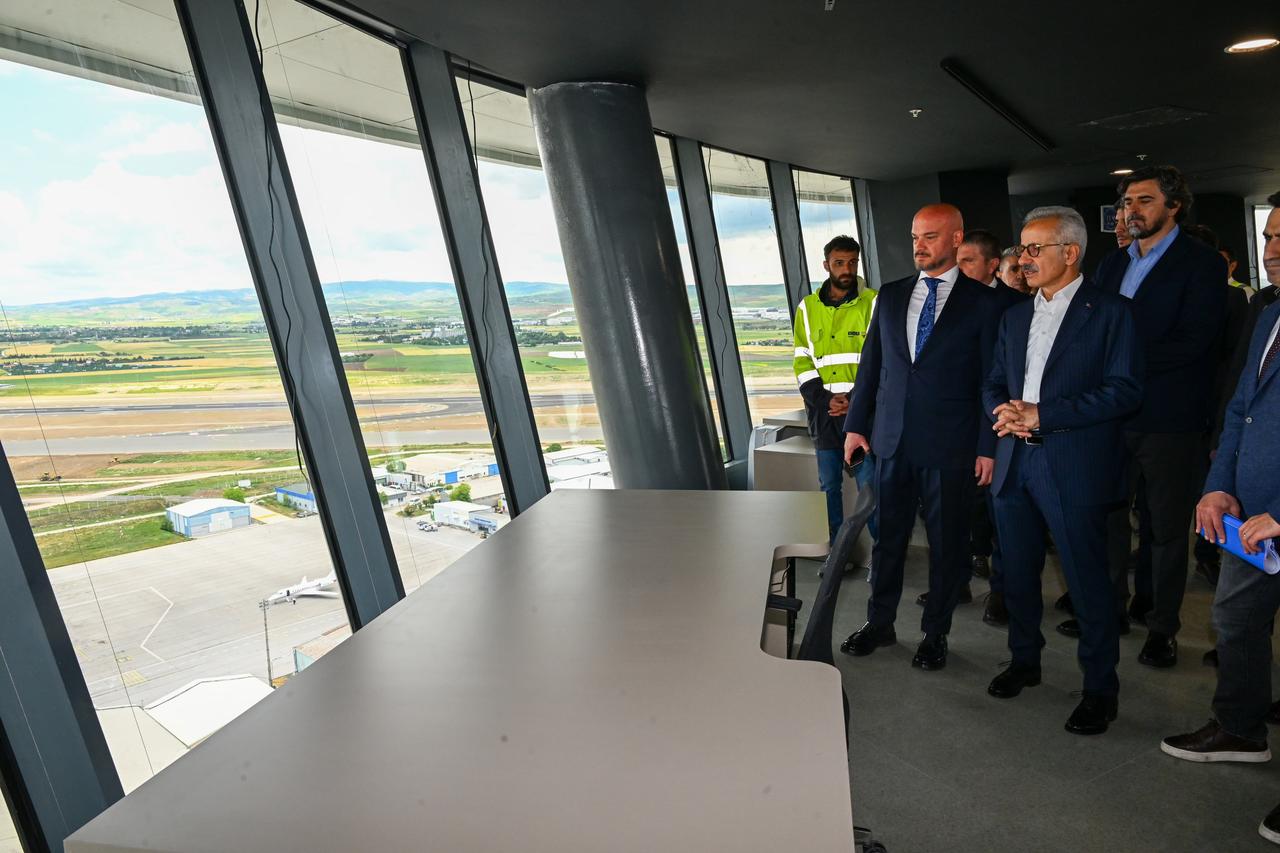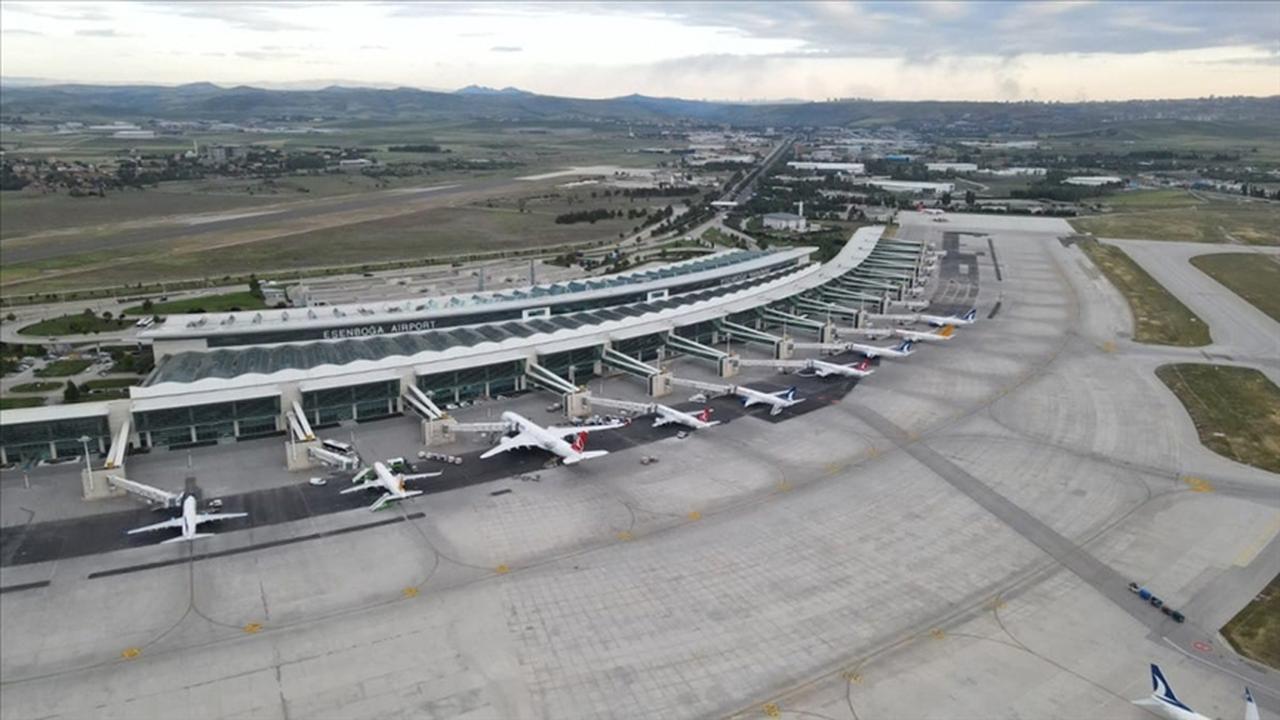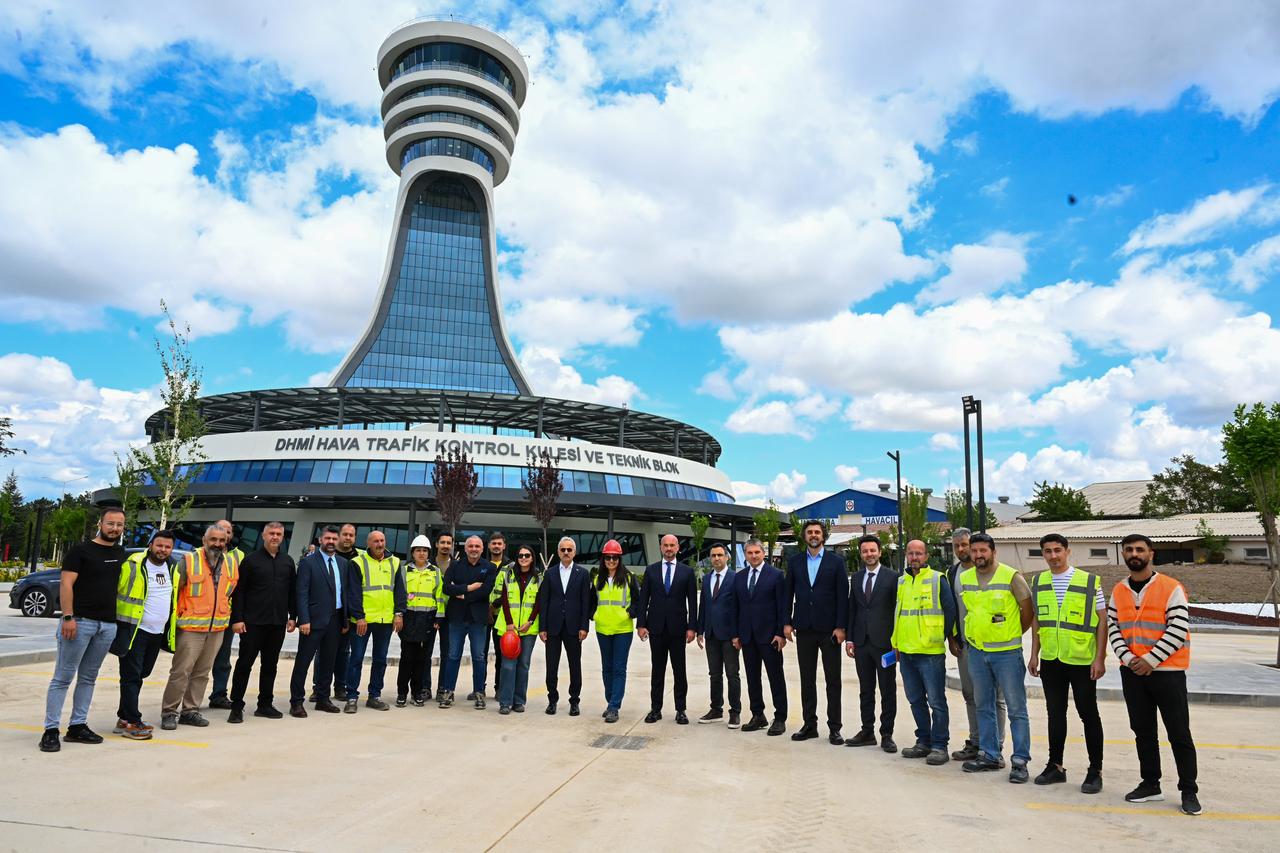
Turkish Transportation and Infrastructure Minister Abdulkadir Uraloglu announced that Ankara Esenboga Airport's annual passenger capacity will be increased to 30 million as part of ongoing modernization efforts that include a new runway and air traffic control tower.
Uraloglu inspected the new 77-meter air traffic control tower at the airport, where construction work is nearing completion as part of the first phase of a comprehensive modernization project.
"Within the scope of the work we have started to ensure it can meet the needs of the era, and for Ankara to have a facility befitting world capitals, we will increase Esenboga Airport's annual passenger capacity to 30 million," Uraloglu stated in a written announcement.

The minister reported that work on the airport's third runway, measuring 3,750 meters in length, and the 77-meter air traffic control tower is approaching completion.
The modernization project was launched in 2023 and planned in two phases to address increasing passenger and aircraft traffic at the airport serving Turkish capital.
Uraloglu noted that the first phase of construction work is nearing its end, marking significant progress in the airport's expansion capabilities.
The modernization project's phased approach allows for continued airport operations during construction while systematically upgrading facilities and capabilities.
The first phase focuses on runway expansion and air traffic control enhancement, providing the foundation for increased flight operations and passenger handling.
Details about the second phase of the modernization project have not been disclosed, though the overall goal remains achieving the 30 million annual passenger capacity target.

The expansion project responds to increased passenger and aircraft traffic at Esenboga Airport, which serves as a key transportation hub for Ankara and the surrounding region.
The new infrastructure additions are designed to enhance the airport's operational capacity and efficiency while meeting modern aviation standards and requirements.
The 77-meter control tower represents a significant upgrade to air traffic management capabilities, providing improved oversight and coordination for aircraft operations.